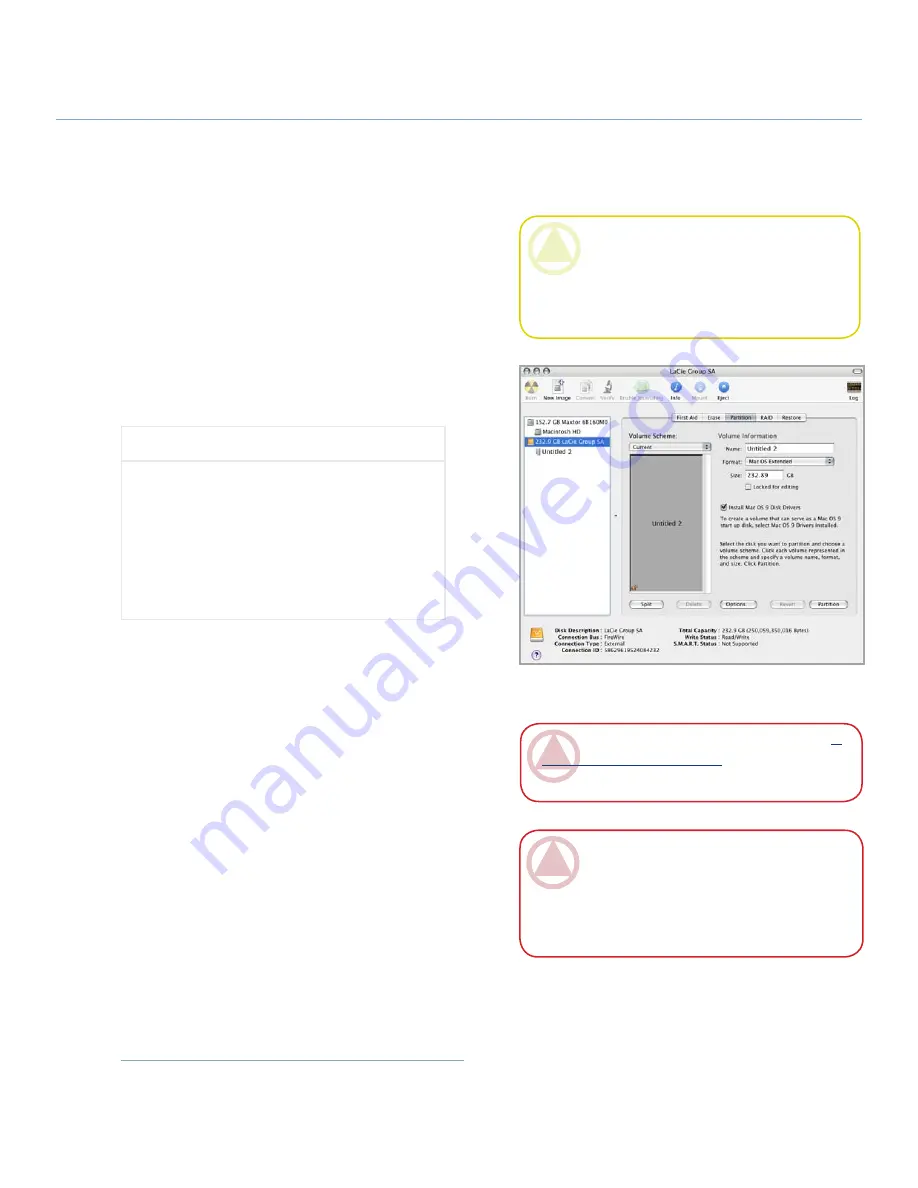
LaCie Little Disk
• Design by Sam Hecht
User Manual
page
Formatting and Partitioning
3.2. Formatting for Mac Users
Connect the drive to the computer and wait for it to
mount.
Select
Utilities
from the
Go
menu in the Finder
menu bar.
In the Utilities folder, double-click
Disk Utility
.
The Disk Utility window will open. Select the volume
labeled
LaCie Hard Drive
from the list of available
hard disks on the left side of the window.
Select the
Partition
tab.
From the
Volume Scheme:
menu, choose the num-
ber of partitions you want to divide the drive into
(Mac OS 10.x gives you the option of dividing the
drive into at most 16 partitions). You can adjust the
size of each partition using the slide bar between the
partitions in the
Volume Scheme:
area.
In the
Volume Information
section, enter a name
for each volume (partition), choose the volume for-
mat (Mac OS Extended, Mac OS Standard, UNIX
File System, or MS-DOS if you did step 5).
Once you have finalized the volume options, click
Partition
. Click
Partition
again when the alert mes-
sage appears to continue.
Mac Disk Utility will format and partition the disk
according to your settings, and your drive will be
ready to use.
1.
2.
3.
4.
5.
6.
7.
8.
9.
Fig. 3.2.2.
IMpOrTANT INfO:
Please refer to section
3,
Formatting and Partitioning
, for a more detailed
comparison of the various file system formats.
CAUTION:
Following these steps will erase ev-
erything from the hard drive. If you have informa-
tion that you want to protect or continue to use,
back up this information before performing these
steps.
To reformat for use with Windows and Mac:
Select the
Erase
tab.
Select
MS-DOS File System
(FAT 32) from
the
Volume Format
menu.
Enter a name for the drive of no more than 11
characters. Click
Erase
. Click
Erase
again.
Continue to Step 5.
a.
b.
c.
d.
IMpOrTANT INfO:
Apple recommends that
unless you have a specific reason to use the UNIX
File System (UFS), you should use the Mac OS
Extended format because it provides a more famil-
iar experience to Macintosh users.
























